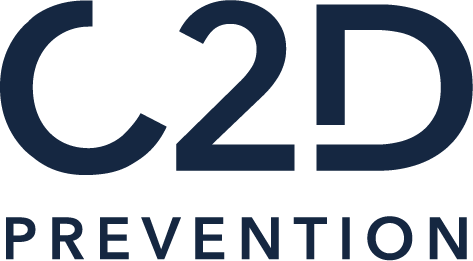How can Shared Vigilance be developed to improve safety and behaviour at work?
‘Safety is everyone's responsibility.’
We have all heard this phrase. Yet in many companies, it remains a pipe dream. Safety is still too often perceived as the sole responsibility of the manager or the HSE department. Shared Vigilance offers a radical paradigm shift: it transforms safety into a collective skill and a mutual responsibility. It is the glue that binds a robust prevention culture together. But how do we move from this noble concept to everyday practice, embedded in behaviour? It is not enough to simply want it; it must be built methodically, by creating an environment of trust and equipping teams with the necessary tools.
Understanding the Obstacles: Why Vigilance Was Silent
Before building, we must understand what prevents vigilance from being expressed. This is the first step in our CAP® Method: Understanding. The obstacles are often invisible and deeply human. Examples include the fear of coming across as a “know-it-all”, the fear of upsetting a more experienced colleague, or the “bystander syndrome”, where everyone thinks someone else will intervene. Management that reacts negatively or ignores feedback also stifles initiative. An honest assessment of the existing culture is therefore essential in order to identify the barriers that need to be removed.

The key role of the manager-leader in Shared Vigilance
Shared Vigilance is based on one non-negotiable pillar: psychological safety. It is up to the manager to establish this. During the Architect phase, we define a clear roadmap for management. This involves concrete actions:
- Valuing feedback: Publicly thank an employee who has reported a risk, even a minor one.
- Leading by example: Actively seek the teams’ opinions on safety issues and acknowledge your own mistakes or oversights.
- Creating a safe space for discussion: Establish rituals (5-minute safety briefings, ‘safety moments’ at the start of meetings) where talking about risks is not only allowed but encouraged.
How can good safety behaviours be embedded in everyday life?
Once trust has been established, teams must be given the means to take action. The Production phase consists of deploying the tools and training that will transform intention into skill. It is not just a question of knowing what to look for, but how to say it. Workshops on assertive and compassionate communication can help people formulate constructive comments (‘I noticed that… Do you need help?’) rather than reproaches. Anchoring this behaviour requires repetition and continuous reinforcement until ‘looking out for others’ becomes automatic, a true reflex of solidarity.
Ultimately, Shared Vigilance is the symptom of a healthy and mature safety culture. It does not arise by chance, but from a conscious and structured effort, driven by exemplary leadership. It is proof that individuals are no longer just executors of procedures, but intelligent and responsible actors in prevention. It is by becoming ‘United through Vigilance’ that teams can truly be ‘United for Performance’, transforming safety from a cost into a real competitive and human advantage.
- Safety is a collective responsibility, not just that of the HSE or the manager.
- The main obstacles: fear of appearing patronising, fear of offending, bystander syndrome, negative reactions from management.
- The manager’s role is central: establishing psychological safety, valuing alerts, leading by example, creating rituals (‘safety moments’).
- Equip teams: training in constructive communication, repetition and recognition to transform intention into a reflex of solidarity.
- Shared Vigilance is the sign of a mature prevention culture, where employees become responsible actors and where safety becomes a human and competitive advantage.
What is Shared Vigilance?
It is an approach where safety becomes a collective and mutual responsibility, rather than solely that of the manager or HSE department.
Why is vigilance rarely expressed?
For fear of coming across as patronising, fear of upsetting a colleague, bystander syndrome (‘someone else will intervene’) or negative reactions from management.
What is the manager’s role?
To create a climate of psychological safety: value alerts, lead by example, acknowledge mistakes, establish rituals (briefings, ‘safety moments’).
How can we embed the right reflexes?
By equipping teams: training in constructive communication, practical exercises, continuous recognition to transform vigilance into a reflex of solidarity.
What are the benefits for the company?
A robust culture of prevention, more committed and responsible employees, and safety that becomes a lever for performance and competitiveness.
Code du travail, art. L.4121-1 : obligation générale de sécurité de l’employeur.
Code du travail, art. L.4122-1 : responsabilité du salarié vis-à-vis de sa propre sécurité et de celle d’autrui.
Code du travail, art. L.4131-1 : droit d’alerte et de retrait en cas de danger grave et imminent.
ISO 45001:2018, clause 5 “Leadership et participation des travailleurs”.
ISO 45001:2018, §5.4 Participation et consultation des travailleurs.
Amy C. Edmondson. L’entreprise sereine. La sécurité psychologique. Pearson, 2022. Traduction française de The Fearless Organization.
AFNOR. Management de la santé et de la sécurité selon l’ISO 45001 : Les clefs pour comprendre et mettre en place. Guide pratique de déploiement, 2018.
Olivier Gauthey & Gérard Gibeault. Développer une culture de sécurité au travail. Comment obtenir l’adhésion de tous ? AFNOR, 2016.
Dunod (collectif). Gestion des risques et culture de sécurité : Maîtriser les facteurs humains et organisationnels. Dunod, 2020.
INRS. Facteur humain et culture sécurité. Dossier technique et pédagogique, 2019.
B. de Montmollin (coord.). Former les équipes à la sécurité et à la performance avec le Crew Resource Management. Éditions Eyrolles, 2015.
Erik Hollnagel. Safety-I et Safety-II : Le passé et l’avenir de la gestion de la sécurité. (trad. française, éditions Techniques de l’Ingénieur, 2017).
Frédéric Fanget & Bernard Rouchouse. L’affirmation de soi. Une méthode de thérapie. Odile Jacob, 2003
